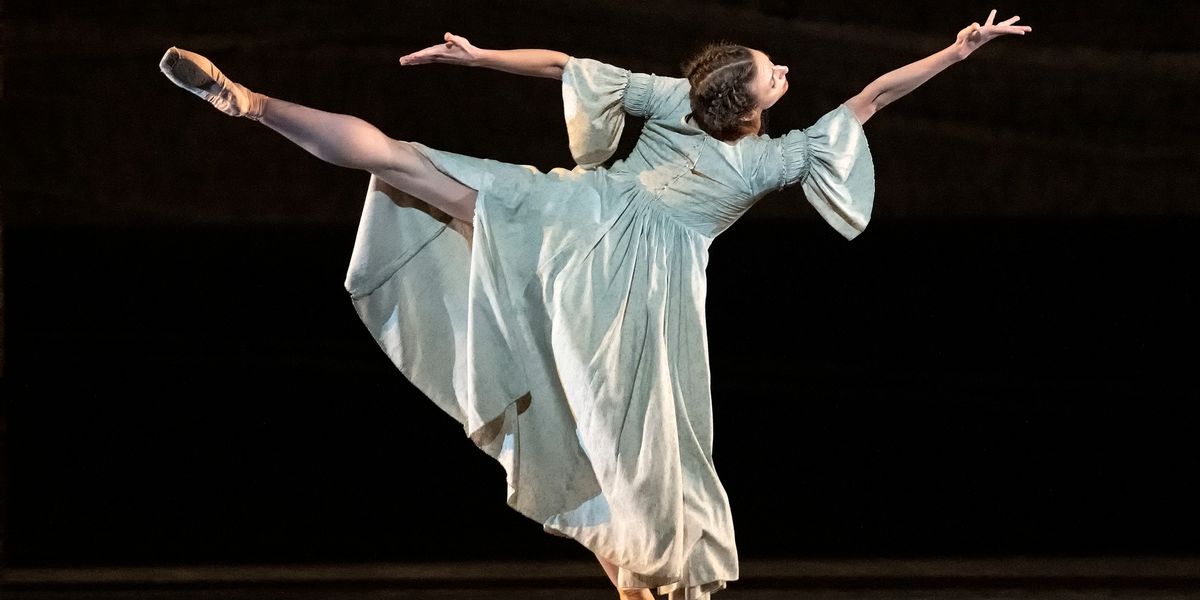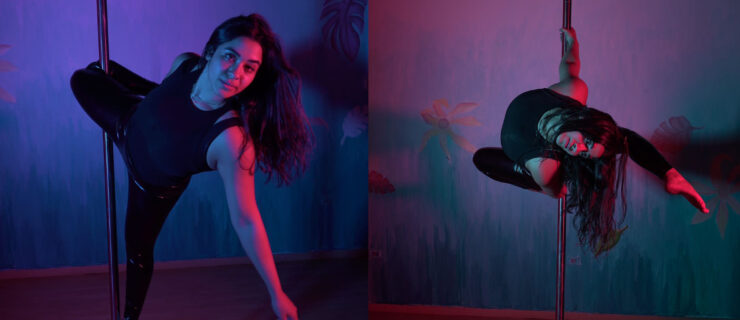Love It or Hate It, Our Editors Discuss All Things Jane Eyre
Story ballets that debut during American Ballet Theatre’s spring season at the Metropolitan Opera House are always the subject of much curiosity—and, sometimes, much debate. Cathy Marston’s Jane Eyre was no different. The ballet follows the eponymous heroine of Charlotte Brönte’s novel as she grows from a willful orphan to a self-possessed governess, charting her romance with the haughty Mr. Rochester and the social forces that threaten to tear them apart.
While the ballet was warmly received in the UK when Northern Ballet premiered it in 2016, its reception from New York City–based critics has been far less welcoming. A group of editors from Dance Magazine and two of our sister publications, Dance Spirit and Pointe, sat down to discuss our own reactions.
Opening salvo: Did we like it?
Courtney Escoyne,
Dance Magazine: Let’s start with the most basic of questions: Did you enjoy watching Jane Eyre? I, for one, really loved it—but then, I’m a huge fan of the storytelling British ballet is steeped in.
Margaret Fuhrer,
Dance Spirit: I mean, I really wanted to. You have to root for this production, right?
Lauren Wingenroth,
Dance Magazine: Yes, I did, if only for the sense of curiosity that kept me wondering how Marston was going to handle this beast of a story.
Madeline Schrock,
Dance Magazine: I agree with Lauren. I was curious to learn more about Marston’s storytelling abilities. And how her choreography would translate to ABT. Overall, I enjoyed it.
Amy Brandt,
Pointe: I did enjoy it. It’s a dark ballet, and I knew that going in, so I wasn’t expecting flashy steps or colorful costumes. It did feel very heavy at times. But what I appreciated was the strong characterizations that unfolded throughout the ballet.
Chava Lansky,
Pointe: I did, though it’s certainly not cheerful, which is fitting to the story. I think New York critics expect ABT story ballets to be centered on the dancing, which this ballet isn’t. It’s telling a story, which happens to incredibly dark and dreary.
LW:
Yes, they kept saying “dark and dreary“ as if those are inherently bad qualities in a ballet! I don’t see why ballet can’t tell dreary stories, and tell them well. Not saying this was a prime example of that, but I don’t really buy that criticism of the ballet.
MF:
I’m sorry, I just couldn’t get into it. [imitating Billie Eilish] I’m the bad guy.
CE:
What was it that you found holding you back, Margaret?
MF:
Here’s my bigger-picture take on story ballets: I feel like they either need to be telling a tale that was written to be told onstage, or they need to have a fantastic score. Otherwise, it’s such an uphill battle. I wasn’t put off by the darkness of the ballet. And I did appreciate the gestural specificity of each character—Marston really captured their personalities in distinct, immediately recognizable ways. But was there even one hard stop in that mush of a score for the whole first act?
LW:
Mushy is a good word for it!
CL:
I didn’t always mind the score, I think the relentlessness reflects the atmosphere. We are in Jane’s memories and mind, after all.
CE:
I know I’ve heard some criticism to the effect that the choreography was just nonstop movement—do we think that may have been an effect of the score?
MF: Yes! 100 percent.
On Marston’s use of gesture
MF:
And great as the gestural stuff was early on, when we were establishing characters, she hammered it and hammered it and hammered it.
LW:
Regarding the gestural movement, Luke Jennings compared it to Mats Ek which made a lot of sense to me. And is probably why I didn’t like it, as I’m not a big Mats Ek fan.
AB:
I felt like I was watching conversations unfold. It wasn’t the usual “I,” “you,” point-to-finger pantomime you always see in ballet. You could see Jane and Rochester’s relationship unfold in a clear way that didn’t feel rushed.
MS:
But do you think for a story like Jane Eyre that the gestural work might be more necessary for an audience who may not be familiar with all the characters? It can feel a bit like she’s holding our hands to make sure we’re on the same page.
CE:
Also, gestural work at ABT during the spring season? At least this wasn’t the millionth repetition of Petipa-era mime.
MS: Agreed, Courtney!
What if the ballet were made for ABT?
MF: So, I kept thinking about what this ballet would’ve looked like if she’d made it for ABT at the Metropolitan Opera House.
LW:
Less plot happening way upstage, I’d hope?
MF:
The scale felt too small. The vocabulary felt too simple for these incredible dancers.
CL:
Margaret, I think that’s where a lot of the frustration with it comes from, that it wasn’t showcasing what the dancers can do. But I think ultimately it just wasn’t the right piece for ABT—whereas it might be received much better at The Joffrey.
LW:
I wonder if it was a blessing in disguise that it wasn’t quite a fit; exposing the dancers to a style of storytelling they’d never otherwise have a chance to try.
CE:
I think that was one of the ballet’s strengths, actually! It would have been a lot more posturing and grand entrances had it been made for ABT. Limitations foster creativity, as composition teachers at my alma mater are fond of saying.
CL:
Yes, Courtney, and Cathy Marston said that as well in regards to her use of minimal sets and props. I think decisions were ultimately made due to budget, but ended up forcing the story to be told through the movement.
LW:
Sometimes I just didn’t understood what the props they were using were.
AB: I was happy to see something different. They took a risk.
MF:
I did think the dancers did absolutely everything they could with it.
CE:
I appreciated that Marston developed a vocabulary that was specific to each character. It’s the MacMillan school of character-building—everything you need to know about them is in the movement.
AB:
Me too, Courtney.
CL:
Me too. And I become so frustrated in story ballets when we leave the plot behind for endless divertissements and wedding dances, it really takes me out of the story. Whereas I found myself really engaged in deciphering what was going on the whole time.
MS:
Yes, Chava. There was little extraneous choreography, except for some passages toward the end, in my opinion.
AB:
I felt like every movement had a meaning. It wasn’t empty dancing or gestures. I enjoyed tying to figure out what each character was trying to say.
CL:
Yes. And I liked particularly how that translated to conversations between Jane and Rochester. I think a really strong example is when Jane imitates Blanche’s movement—we totally get what she’s saying by her movement reference, and it got a laugh from the audience.
MF: [Laughs] I did love that Jane got the laugh of the night with that!
MF: The gestures weren’t empty, but didn’t you feel each one was overused?
AB:
The repetition didn’t bother me at all…and I saw it three times.
CL:
I agree with Amy—I read more into the gestures each time.
MF:
If I ever see another phallic Rochester leg…
LW:
I was wondering if that was just me. But Gia Kourlas saw it too…
CE:
It’s interesting to me how completely differently that was taken in the U.S., Margaret! Judith Mackrell seemed to love it.
CL:
Marina Harss just seemed confused by the leg, which I kind of agree with.
LW:
I really like what Judith had to say, especially the idea of cutting St. John Rivers and making Bertha less literal. I just wish the steps themselves weren’t quite so cliché. The pushing, the head-grasping. I’m all for characters having a signature, but I just didn’t like those.
AB:
True, I wasn’t always jazzed about some of the partnering choreography. It was too yank-y and manipulative at times.
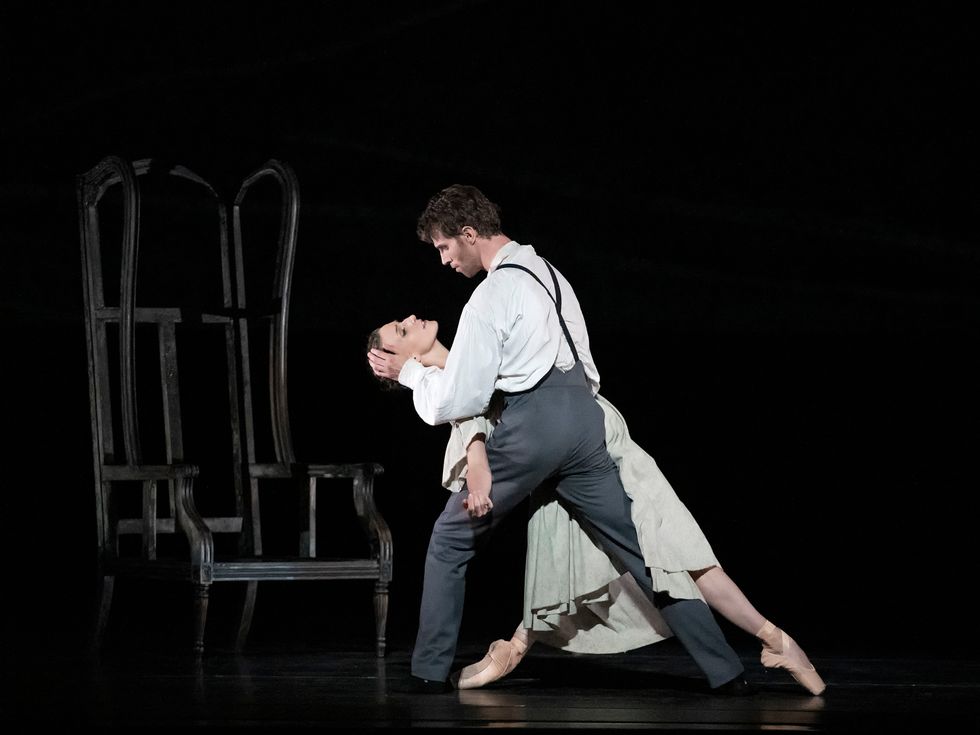
Devon Tesucher as Jane and James Whiteside as Mr. Rochester in Jane Eyre.
Gene Schiavone, Courtesy ABT
On the principal casts
CL: I think the depiction of Rochester was sort of vague throughout—the ballet makes him so playful and arrogant, when in the book he’s far more introspective and tortured.
LW:
Yes, the way she had Rochester enter didn’t paint him as introspective at all. Quite the opposite.
MS:
But that can be difficult to successfully show through movement. Perhaps that interpretation shift was intentional?
CE:
Did you find that to be true across the casts that you saw, Chava?
CL:
I found that Cory Stearns was the strongest Rochester.
MF:
I kept wishing they’d cast Cory opposite Devon Teuscher.
CL:
I do think that Cory/Devon would have been the strongest cast. James Whiteside definitely played it very haughty, though I think that he did the ending section in the most heartbreaking way. His melodramatic style really served him well there.
MF:
James is wonderful and a man of many talents, but he’s not great at creating an erotic charge with his partners, and that’s so central to the Jane–Rochester relationship.
CE:
I actually really loved James and Devon as a couple, which was not something I ever thought would happen. The sexual tension in that first act pas…
MF:
Oh, fascinating! You thought James and Devon had sexual tension?
CL:
I really didn’t feel that, Courtney. I felt there was a real lack of tension and chemistry between James and Devon.
CE:
Maybe I was just reacting to the choreography, but it got me. I appreciated that Marston found a way to show both what was really happening and what was happening inside their heads.
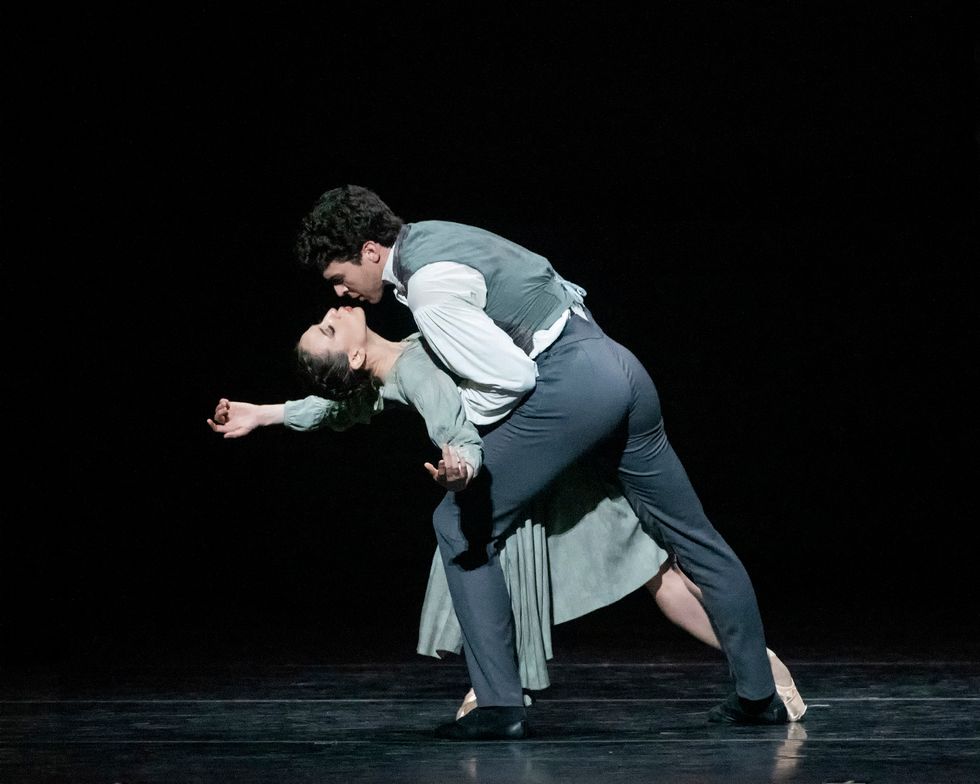
Isabella Boylston as Jane and Thomas Forster as Mr. Rochester in Jane Eyre
Gene Schiavone, Courtesy ABT
LW: I didn’t really feel it between Thomas Forster and Isabella Boylston either.
MF:
Despite their absolute best efforts—you could tell they were giving it everything they had.
AB:
I thought Thomas Forster was excellent as Rochester. He showed a lot of range as an actor. I hope to see more of him in leading roles.
MF
: I’d like to see Thomas do more generally. He seems chronically underused.
CE:
Can we turn this into a Thomas Forster appreciation post instead?
LW:
What about Misty Copeland and Cory?
CL:
The relationship between Misty and Cory was nice, but I don’t think that the role was right for Misty. She played it as sort of beautiful and sad, but not tortured or self-conscious. Also, the relationship between Misty and Skylar Brandt as Young Jane wasn’t quite right. I think what made Devon and Catherine Hurlin so nice to watch is that Catherine is a really wild dancer, and Devon is really contained, so the growth makes sense. That didn’t exist with Skylar and Misty, where the descriptors are flipped.
MF:
Oh, Catherine was fantastic!
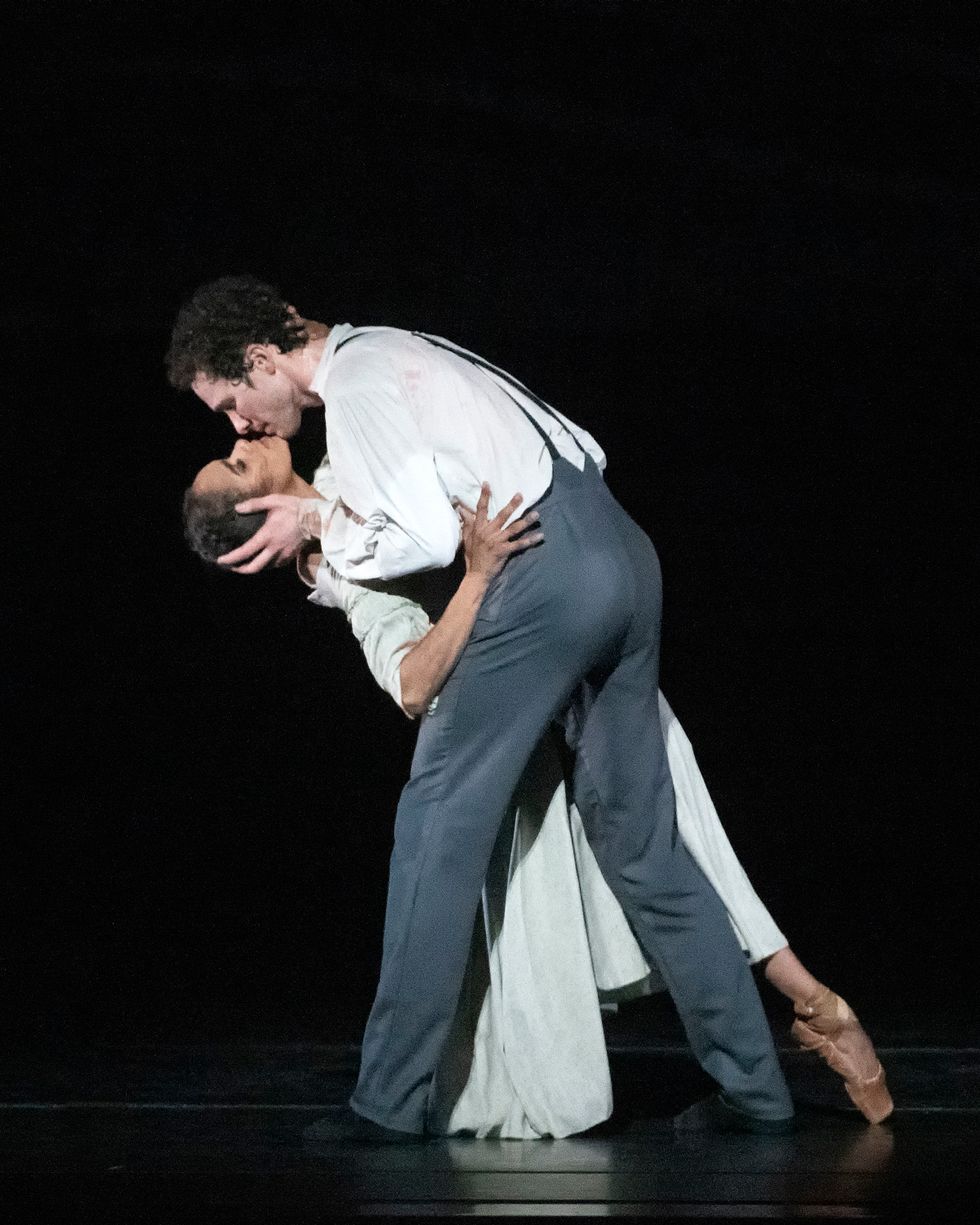
Misty Copeland as Jane and Cory Stearns as Mr. Rochester in Jane Eyre
Gene Schiavone, Courtesy ABT
Dream casting for future runs
CE: Were there any dancers we would love to see tackle these roles who didn’t get a chance to?
AB:
Sarah Lane as Jane.
MS:
Another vote for Sarah Lane.
LW:
Christine Shevchenko?
CL:
Christine!
CE:
I think it’d be a challenge for Christine. I’d love to be surprised.
CL:
Katherine Williams?
LW:
David Hallberg as a super broody Rochester?
CE:
The broodiest!
MF:
I was so thinking that. Because it’s really an Onegin role! Give him a fake blond beard and let him run with it!
LW:
Yes! I was thinking about his Onegin interpretation the whole time. It’s so good.
AB:
I’d like to see Hallberg in this.
CE:
Roberto Bolle and those puppy dog eyes could be fascinating…too bad he’s leaving the company.
CL:
Calvin Royal III might have been interesting too. He was definitely the most engaging of the Headmasters.
MS:
Yes, Calvin was a standout.
CE:
He has been killing it this season!
MF:
Calvin is really figuring himself out as a dramatic actor, which is fantastic.
CL:
Sarah Lane was so fantastic as Mrs. Fairfax. I’m so impressed with what she did with what was probably not a super-desirable role.
AB:
Sarah did a wonderful job with that. All of those tics—it must have been hours and hours of rehearsal to get them just right.
CL:
Though Cassandra Trenary was great in that role as well.
LW:
It must have been an interesting experience for her, switching between Mrs. Fairfax and Bertha.
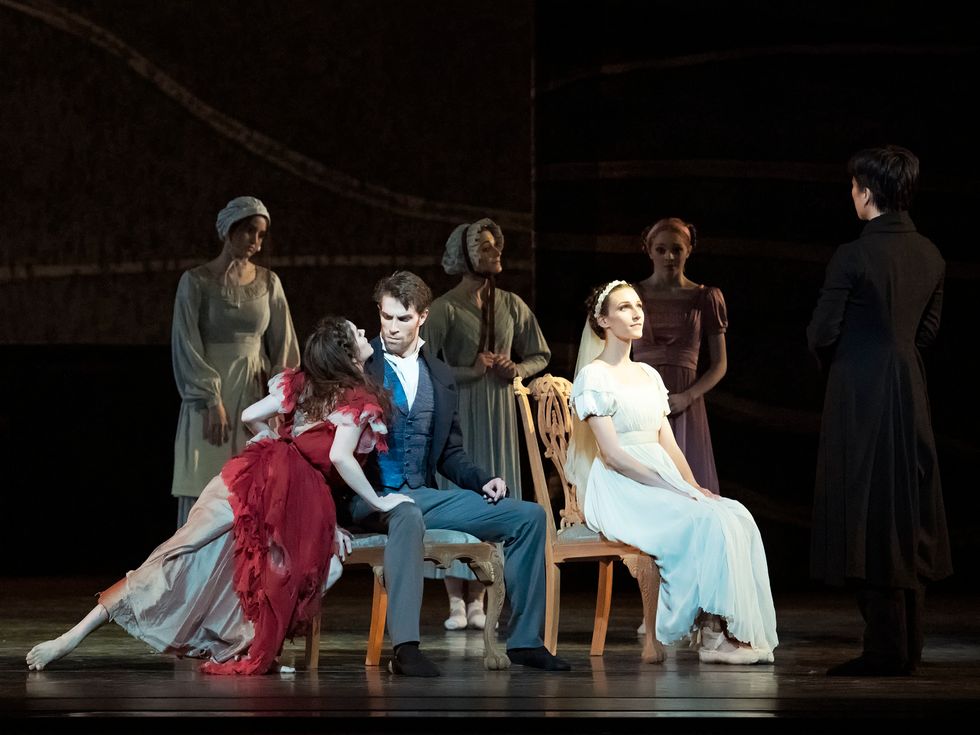
Cassandra Trenary (Bertha), James Whiteside (Mr. Rochester) and Devon Teuscher (Jane) in Jane Eyre.
Gene Schiavone, Courtesy ABT
The character we could’ve seen less of
CE:
There seems to have been a general sense that St. John Rivers could’ve been ditched as a character altogether—any thoughts on that?
LW:
Boy, bye. I was bored whenever he was onstage.
MF:
St. John is boring and terrible in the book.
CL:
Well, a ton of that plotline was left out.
MS:
Right. So much of it was truncated, especially the marriage proposal. Well, completely cut.
CL:
I think she watered him down too much.
CE:
Necessary, don’t you think?
MS:
I didn’t miss it.
AB:
But don’t we need St. John Rivers to see her change of heart? What else would they stick in there?
CE:
He did serve as a useful framing device.
CL:
Yes. And to show yet another relationship to men.
MF:
Yeah, he seems dramatically necessary but completely uninteresting as a character.
LW:
It might have been powerful to see her come to it on her own?
CL:
Then it’s not just that Rochester is the only man who’s nice to her, and that’s why she loves him.
CE: I mean, St. John is perfectly nice. That’s the problem.
On Marston’s multifaceted use of a male corps
MS: Speaking of men, can we talk about how Marston used that sea of men throughout? Did you find it effective or think they got in the way?
AB:
I got tired of the D-Men after a while. It felt a little relentless.
LW:
Getting in the way! I wanted Marston to trust the rest of the cast, specifically Jane, to be able to carry it without that unnecessary metaphor.
MF:
I understood the device. I think it’s smart. I did get tired of seeing Jane buffeted by dudes.
CL:
I think that they are effective, but that it was overkill. But they really served to make the ballet more feminist.
CE:
In what way, Chava?
CL:
In showing her lack of agency in the society she lived in, and the way that men controlled her life—literally carrying her from place to place. I think that it’s a really powerful image, even if they were sometimes too much. And there were moments where Marston used them really cleverly, like holding the candles in Thornfield, when they seemed like walls/staircases and moved Jane around.
CE:
I loved the use of them to convey a set that Northern Ballet probably just didn’t have the money to build.
MF:
Yes, that was rather beautiful.
AB:
I thought that was creative, too.
MS:
It gave a nice, overarching sense of her being haunted by these men, and that served how time jumps around throughout the ballet well.
LW:
Yes, I wish they were more haunting (read: subtle) and less in her face.
CL:
I also thought it was an interesting juxtaposition to how the D-Men interacted with the other characters—like as Rochester’s horse buddies, or with Blanche. More privileged characters didn’t have such a tortured relationship with them.
MS:
That’s interesting to note.
CE:
Is that a function of the narrative, or a purposeful double meaning?
Stella Abrera breaking bad
CE: Also, can we take a second to give a shoutout to Stella Abrera’s Blanche for being ridiculously fun?
MF:
Love it when Stella breaks bad.
MS:
She really ran with that role.
CL:
I really liked Christine Shevchenko’s version as well!
LW:
I feel like I totally missed all the moments people were talking about with Hee Seo. She didn’t seem so bad to me.
CE:
The strongest reaction on opening night was to Stella’s Blanche shoving little Zimmi Coker out of her way.
CL:
Mr. Rochester’s ward: Fun and a nice, frivolous break, or overdone?
MS:
The character felt exhausting to me. But it created such a strong contrast. Zimmi did an excellent job.
MF:
I found Zimmi endlessly irritating, which…mission accomplished, I guess?
CE:
I think her character is necessary. She’s adorable, but she also really serves to show how Jane has grown, and her quiet strength.
CL:
I think that those moments, like Blanche shoving Rochester’s ward, showed the strength of the ballet. People were really engaged enough to get the jokes.
CE:
Like when Jane imitates Mrs. Fairfax or Blanche at the end! I could hear the people around me getting it.
CL:
Which shows the audience is really paying attention.
LW:
I totally missed that.
CE:
Lauren, maybe you just saw the wrong cast!
The hotly debated ending
CE:
What do we think of the ending, particularly that last image of Jane stepping forward into the spotlight? The New York Times called it hokey, but The Guardian was all for it.
CL:
Love it! And apparently Marston got a lot of pushback for it at Northern Ballet, because it’s kind of rewriting the ending.
MF:
I liked it, although I do agree with Gia Kourlas that the pacing was off somehow in the final moment.
MS:
I was proud of Jane. But I personally had mixed feelings about it. Loved the lighting, though.
LW:
I liked it.
CL:
Reminding the audience that it’s Jane’s story.
AB:
Do we need reminding, though? That said, I didn’t mind the ending.
CL:
Amy, I think yes, because otherwise we’d think that she’s happy just because she’s married, rather than happy for having come into her own.
CE:
An admirable break from the “third act, let’s have a wedding and everything is marvelous because of it!” pattern, I thought.
CL:
Some did it better than others. Isabella just sort of seemed to be standing there and it didn’t work.
CE:
I think Devon played it beautifully, though Rochester crumpling behind her was rather distracting.
MS
: Ooh, I think you put your finger on it. Something felt a bit off to me.
MF:
Oh, did James crumple? I missed the crumpling.
CL:
I don’t really remember seeing what was behind her any of the three times—the lighting is pretty extreme there.
LW:
While we’re talking about the ending, why didn’t Jane get her own bow?!
CL:
I don’t know! I’m totally with you on that!
CE: She should have gotten to walk her own self out there.
On the split opinions between American and British critics
LW: I’m curious for theories on the great New York versus UK criticism divide. Was it the setting? The dancers? The expectations?
CE:
New York critics are grumpy? [Laughs]
LW:
Or New York critics are just mean?
CL:
I think New York critics are primed by Alexei Ratmansky. This was the opposite of a sensory overload.
MF:
I think the Met was a very weird stage for this ballet, for starters.
AB:
It was meant for a much smaller stage, so that’s one thing. I also think the focus in Europe is much different. We’re used to a very Balanchine and/or Petipa diet, and contemporary choreography seems to have evolved a little differently over there.
CE:
I think that British critics are steeped in a much richer dramatic tradition than you find in New York. Ashton and MacMillan are the bedrock of dramatic ballet there—and both of those choreographers are big on making every movement, gesture and stillness a result of character.
AB:
But MacMillan and Ashton are from earlier eras. I think there was more cross-pollination back then.
CE:
They might be earlier era choreographers, but they’re in the air you breathe in London. I know Devon has talked about just how much meaning each movement Marston gave them had.
LW:
But do New York critics hate MacMillan’s Romeo and Juliet? Because this feels like it lives in the same world.
MS:
I don’t think this is necessarily a 1:1 comparison.
CE:
Kenneth made that for a huge opera house, and he was creating a hugely populated world.
CL:
I think it doesn’t live in the same world, Lauren. Romeo and Juliet is so grand, and the music is massively dramatic. I think that’s the easiest comparison, but they’re just so different.
MF:
Agreed. MacMillan and Ashton tended to choose big, meaty scores.
CL:
Marston has said that using music from that era would make it too over-dramatic, which I think she was shying away from. The most drama filled moments, such as the fire, use original compositions.
LW:
I wonder if people would have liked it more had she gone in that direction instead. I think I would have—I’m a sucker for drama.
CL:
I like that it wasn’t dramatic. I just don’t think that’s what Brönte intended. I think it was more true to the story this way.
CE:
Jane Eyre is exceptionally internal—which is what a novel is meant to do!
What does the choreographer owe to the source material?
MF: What about Tudor? I feel like Marston has much more in common with him, or she’s trying to inhabit the same space.
CE:
Tudor is arguably even more dated than MacMillan, but he does have a similar preoccupation with psychology—having Jane and Rochester show what was happening in their heads as they shook hands in that first act pas was a very Tudor touch.
CL:
Or it’s a very Brönte touch! That is the story! It’s not a story of kings and queens or warring families. It’s one small, plain woman and what goes on in her head.
MF:
I think I personally tend to go for ballets that have a musical reason, first and foremost, to exist, and that’s why I struggle with works like this so much. But that’s my old-fashioned taste.
MS:
Interesting point. Which god should Marston serve? Brönte, or the pillars of British ballet?
CE:
I rather think she served both.
LW:
Neither?
MF:
Neither? [Laughs]
CL:
There’s so much criticism that she held too closely to the plot, but don’t you think people would have been upset if she hadn’t?
LW:
I think that’s a silly critique. She did simplify it quite a bit already.
AB:
Yes.
MS:
My point exactly. She’s faced a lot of comparison. Can we treat her as a unique voice?
Does ABT have the right audience for Jane Eyre?
MF:
I respect Marston so much for trying to do this. It seems like she’s coming from the right place in pretty much every respect.
CL:
Not to say that it was perfect, but I can’t really imagine a better Jane Eyre ballet. I think it’s a tall task.
MF:
Agreed! I just don’t think Jane Eyre is meant to be a ballet.
CE:
Frankly, a lot of male choreographers—looking at you, Ratmansky—have been given a lot more leeway with far less narratively successful full lengths that were way more expensive to produce.
CL:
Right! It’s crazy to me that people would prefer Harlequinade over this, which is so minimal in terms of plot, just so they could look at pretty costumes.
MF:
Oh, but they’re trying to do completely different things.
CE:
Beautiful dancing in Harlequinade, but it shouldn’t have cost what it did, and it should not be in two acts.
LW:
I would rather see choreographers tackling big stories that may not work rather than trite ones.
CL:
But I think that’s what ABT audiences expect when they come to the Met.
MF:
I don’t think anyone would argue that the plot was the point of Harlequinade or Whipped Cream, though. Aren’t they really abstract works camouflaged as story ballets? Big, grand excuses for dancing?
CL:
I agree that they shouldn’t be compared, but I think that in part, ballets like those are why Jane Eyre got such a harsh reaction.
MS:
Because it’s not meeting audience expectations?
CL:
Because it wasn’t about dancing.
LW:
I think it was about dancing, but not in the way we’ve been primed to think of it at ABT.
CE:
It wasn’t about flashy dancing. One of the primary critiques has actually been that there was too much movement, when what they were really saying is that there weren’t enough applause moments.
CL:
And that’s unusual for ABT. The story and characters were given more priority. But 32 fouettés wouldn’t have helped to illustrate the plot, even if they get the audience riled up.
MS: Unusual is one way to move forward.
Parting shots
MF:
I don’t think it’s bad for ABT to try different things, and I don’t think every story ballet should be a Ratmansky ballet. But I don’t think Jane Eyre was successful.
CE:
I’m going to respectfully disagree!
LW:
I’m glad they took the risk, even though it didn’t quite work for me. It seemed like the dancers enjoyed the experience.
MF:
For what it’s worth, though, I’m eager to see more of Marston’s work.
CL:
I’m with Courtney! I just feel kind of bad for Marston, in that she didn’t make this with ABT in mind, and now she’s being criticized, when American audiences don’t really know her and could have gotten a better impression of her work.
LW:
Totally agree! And I hope she isn’t punished with less future work after this.
CE:
I, for one, can’t wait to see future casts take this on. There’s a lot of character work to sink their teeth into. But that is. perhaps a story for another day.
